Deploy and Run a microservice in Kubernetes
This blog covers little basics of Kubernetes & Container Orchestration in general and then details out how to deploy a Flask-based microservice (along with Postgres and React.js) to a Kubernetes cluster.
Dependencies:
- Docker Engine - CE: Client: v19.03.8, Server: v19.03.8
- Kubectl: v1.18.0
- Minikube: v1.9.2
- Oracle VirtualBox: v6.1
Objectives
- Understand what is container orchestration
- Pros and cons of using Kubernetes over other orchestration tools like Docker Swarm and Elastic Container Service (ECS)
- Kubernetes Architecture
- Kubernetes Objects - Pod, Service, Volumes, Namespace etc.
- Configure a Kubernetes cluster to run locally with Minikube
- Use Kubernetes Secrets to manage sensitive information
- Set up a volume to hold Postgres data within a Kubernetes cluster
- Run Flask, Gunicorn, Postgres, and React on Kubernetes
- Expose Flask and React to external users via an Ingress
What is Container Orchestration?
Container orchestration is automated configuration, coordination, and management of Containers. As you move from deploying containers on a single machine to deploying them across a number of machines, you’ll need an orchestration tool to manage (and automate) the arrangement, coordination, and availability of the containers across the entire system.
Orchestration tools helps in:
- Cross-server container communication
- Horizontal scaling
- Service discovery
- Load balancing
- Security/TLS
- Zero-downtime deploys
- Rollbacks
- Logging
- Monitoring
This is where Kubernetes fits in along with a number of other orchestration tools - like Docker Swarm, ECS and Mesos.
Which one should you use?
- use Kubernetes if you need to manage large, complex clusters
- use Docker Swarm if you are just getting started and/or need to manage small to medium-sized clusters
- use ECS if you’re already using a number of AWS services
| Tool | Pros | Cons |
|---|---|---|
| Kubernetes | large community, flexible, most features, hip | complex setup, high learning curve, hip |
| Docker Swarm | easy to set up, perfect for smaller clusters | limited by the Docker API |
| ECS | fully-managed service, integrated with AWS | vendor lock-in |
There’s also a number of Kubernetes services offered by deifferent vendors
- Elastic Container Service (EKS)
- Google Kubernetes Engine (GKE)
- Azure Kubernetes Service (AKS)
Kubernetes
Kubernetes is a portable, extensible, open-source platform for managing containerized workloads and services, that facilitates both declarative configuration and automation. The name Kubernetes originates from Greek, meaning helmsman or pilot. Google open-sourced the Kubernetes project in 2014
Kubernetes Architecture (Components of Kubernetes)
- The master node, which hosts the Kubernetes Control Plane that controls and managaes the whole Kubernetes system. It runs 3 processes: kube-apiserver, kube-controller-manager and kube-scheduler.
- Worker nodes that run the actual applications you deploy. It runs 2 processes: kubelet (which communicates with the Kuberenetes master) and kube-proxy.
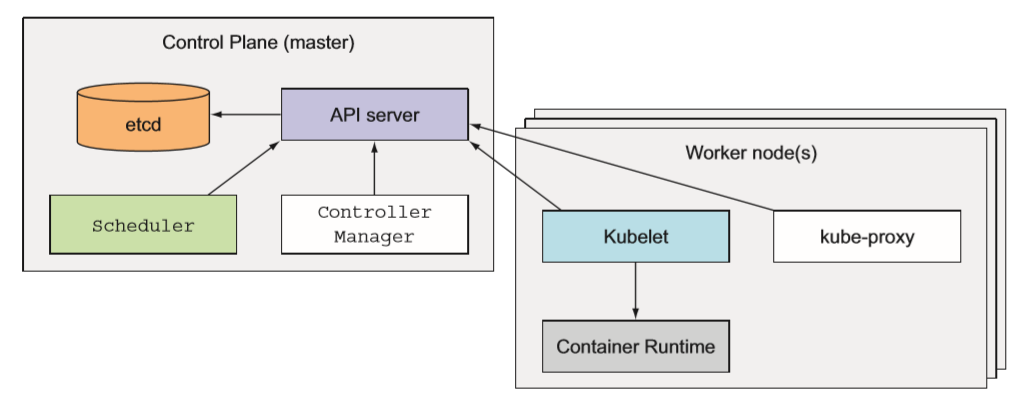 To knowmore about each component, refer: https://kubernetes.io/docs/concepts/overview/components/
To knowmore about each component, refer: https://kubernetes.io/docs/concepts/overview/components/
Kubernetes Concepts
To work with Kubernetes, you use Kubernetes API objects to describe your cluster’s desired state: what applications or other workloads you want to run, what container images they use, the number of replicas, what network and disk resources you want to make available, and more. You set your desired state by creating objects using the Kubernetes API, typically via the command-line interface, kubectl
The basic Kubernetes objects include:
- Pod is a logical, tightly-coupled group of application containers that run on a Node. Containers in a Pod are deployed together and share resources (like data volumes and network addresses). Multiple Pods can run on a single Node.
- Service is a logical set of Pods that perform a similar function. It enables load balancing and service discovery. It’s an abstraction layer over the Pods; Pods are meant to be ephemeral while services are much more persistent.
- Volumes are used to persist data beyond the life of a container. They are especially important for stateful applications like Redis and Postgres.
- A PersistentVolume defines a storage volume independent of the normal Pod-lifecycle. It’s managed outside of the particular Pod that it resides in.
- A PersistentVolumeClaim is a request to use the PersistentVolume by a user.
- Namespace: Kubernetes supports multiple virtual clusters backed by the same physical cluster. These virtual clusters are called namespaces
Kubernetes also contains higher-level abstractions that rely on controllers to build upon the basic objects, and provide additional functionality and convenience features. These include:
- Deployments are used to describe the desired state of Kubernetes. They dictate how Pods are created, deployed, and replicated.
- DaemonSet A DaemonSet ensures that all (or some) Nodes run a copy of a Pod.
- StatefulSets: Manages the deployment and scaling of a set of Pods, and provides guarantees about the ordering and uniqueness of these Pods.
- ReplicaSet: Before diving in, let’s look at some of the basic building blocks that you have to work with from the Kubernetes API: A ReplicaSet’s purpose is to maintain a stable set of replica Pods running at any given time
- Jobs: A Job creates one or more Pods and ensures that a specified number of them successfully terminate
Other objects/metadata for the objects include:
- Labels Labels are key/value pairs that are attached to objects, such as pods.
- Ingress An API object that manages external access to the services in a cluster, typically HTTP. Ingress may provide load balancing, SSL termination and name-based virtual hosting
Now, It’s time to look at the App deployment part, which is the main purpose of this blog.
App Overview
DevopsTree: Flask + React + Postgres app (currently, it only displays the information. You cannot edit/update). It displays major tools & technolgies used in Devops & it’s dependencies in a Tree pattern.
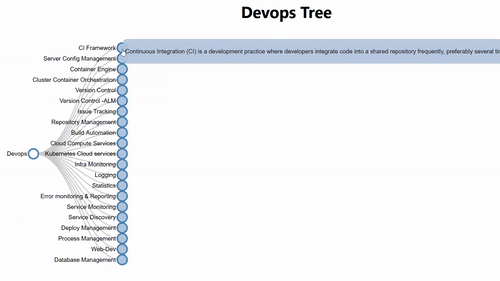
Project Setup
Clone the Github repo: DevopsTree-Kubernetes
$ git clone https://github.com/vinaydhegde/DevopsTree-Kubernetes ~/DevopsTree-Kubernetes
Below is the code structure you see when you clone the repo :
├── README.md
├── k8s
│ ├── devopstree-secret.yml
│ ├── devopstree-deployment-postgres.yml
│ ├── devopstree-service-postgres.yml
│ ├── devopstree-minikube-ingress.yml
│ ├── devopstree-pv.yml
│ ├── devopstree-pvc.yml
│ ├── devopstree-deployment-flask.yml
│ ├── devopstree-service-flask.yml
│ ├── devopstree-deployment-react.yml
│ └── devopstree-service-react.yml
└── services
├── client
│ ├── Dockerfile
│ ├── Dockerfile-k8s
│ ├── README.md
│ ├── node_modules
| ├── public
│ ├── package.json
│ ├── src
│ │ ├── App.js
│ │ ├── index.js
│ │ ├── utils.js
│ │ ├── Tree
│ │ ├── index.js
├── db
│ ├── create_database.sql
│ └── dockerfile
└── server
├── dockerfile
├── entrypoint.sh
├── manage.py
├── project
│ ├── __init__.py
│ ├── api
│ │ ├── __init__.py
│ │ ├── devopstree.py
│ │ └── models.py
│ └── config.py
└── requirements.txt
Minikube
Minikube is a tool which allows developers to use and run a Kubernetes cluster locally. It’s a great way to quickly get a cluster up and running so you can start interacting with the Kubernetes API.
# For Ubuntu
$ curl -LO https://storage.googleapis.com/minikube/releases/latest/minikube-linux-amd64 && sudo install minikube-linux-amd64 /usr/local/bin/minikube
The command above is to install Minikube on Ubuntu. You can follow the official quickstart guide to get Minikube installed for other OS platforms.
Along with this, you also need to install,
-
A Hypervisor (like VirtualBox or HyperKit) to manage virtual machines
-
Kubectl to deploy and manage apps on Kubernetes
$ curl -LO https://storage.googleapis.com/kubernetes-release/release/`curl -s https://storage.googleapis.com/kubernetes-release/release/stable.txt`/bin/linux/amd64/kubectl $ chmod +x ./kubectl $ sudo mv ./kubectl /usr/local/bin/kubectl $ kubectl version --client
Start Minikube & create a cluster
$ minikube start
Access Minikube dashboard:
$ minikube dashboard
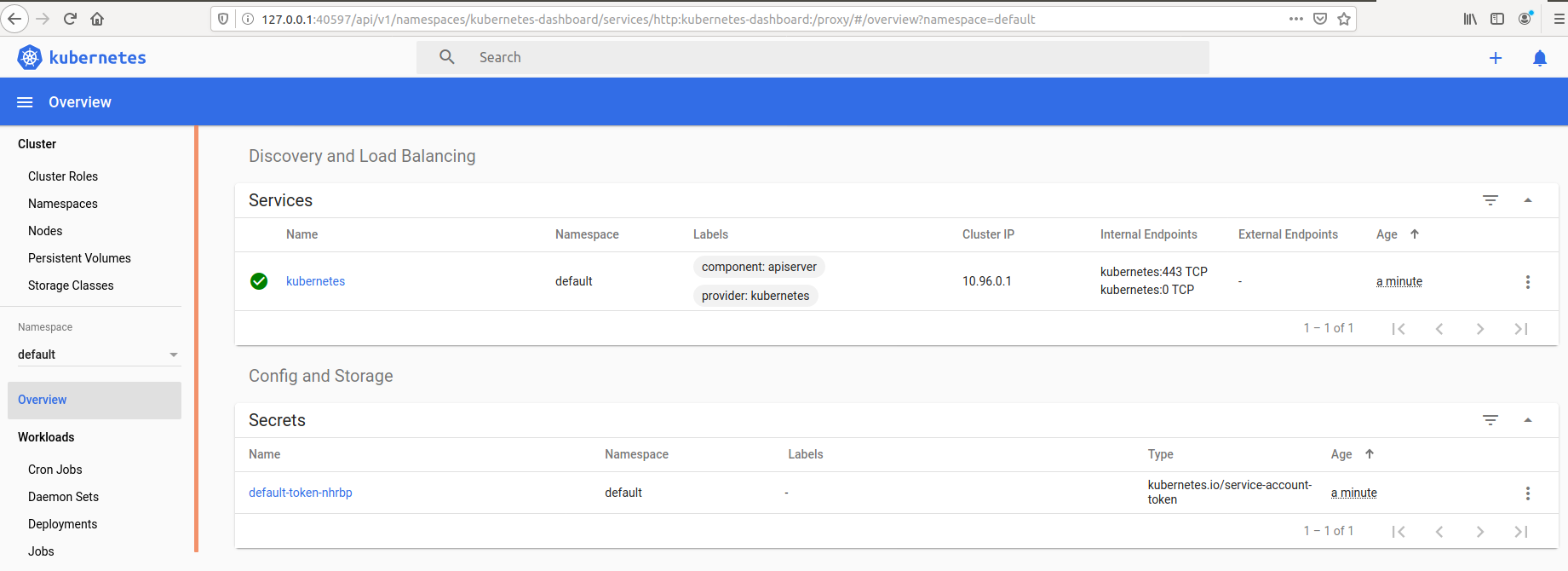
Note: Config files will be located in the ~/.kube directory and all the virtual machine bits will be in the ~/.minikube directory.
Now let’s start creating objects via the Kubernetes API.
Creating Objects
To create a new object in Kubernetes, you must provide a “spec” that describes its desired state.
Example:
apiVersion: apps/v1
kind: Deployment
metadata:
name: devopstree-react
spec:
replicas: 1
template:
metadata:
labels:
app: devopstree-react
spec:
containers:
- name: devopstree-react
- image: vinaydhegde/devopstree-react:latest
Required Fields:
apiVersion- Kubernetes API versionkind- the type of object you want to createmetadata- info about the object so that it can be uniquely identifiedspec- desired state of the object
In the above example, this spec will create a new Deployment called devopstree-react with a single replica (Pod). Take note of the containers section. Here, we specified the Docker image to pull from the docker registry.
We are going to create the following objects in Kubernetes:
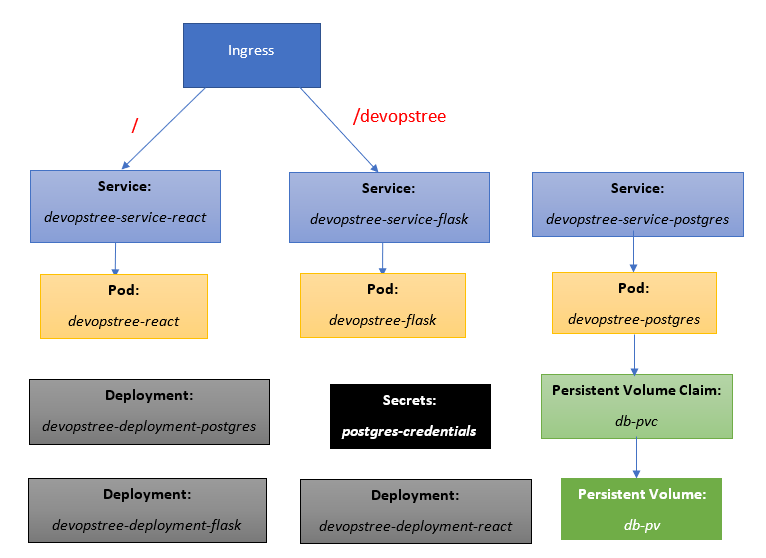
Volume: db-pv
As, containers are ephemeral, we need to configure a volume, via a PersistentVolume and a PersistentVolumeClaim, to store the Postgres data outside of the Pod.
Take note of the YAML file in k8s/devopstree-pv.yml:
apiVersion: v1
kind: PersistentVolume
metadata:
name: db-pv
labels:
type: local
spec:
capacity:
storage: 2Gi
storageClassName: standard
accessModes:
- ReadWriteOnce
hostPath:
path: "/data/db-pv"
This configuration will create a hostPath PersistentVolume at “/data/db-pv” within the Node. The size of the volume is 2 gibibytes with an access mode of ReadWriteOnce, which means that the volume can be mounted as read-write by a single node.
Note: Kubernetes only supports using a hostPath on a single-node cluster.
Create the volume:
$ kubectl apply -f ./k8s/devopstree-pv.yml
View details:
$ kubectl get pv
NAME CAPACITY ACCESS MODES RECLAIM POLICY STATUS CLAIM STORAGECLASS REASON AGE
db-pv 2Gi RWO Retain Available standard 5s
You can also see this object in the dashboard:

k8s/devopstree-pvc.yml:
apiVersion: v1
kind: PersistentVolumeClaim
metadata:
name: db-pvc
labels:
type: local
spec:
accessModes:
- ReadWriteOnce
resources:
requests:
storage: 2Gi
volumeName: db-pv
storageClassName: standard
Volume Claim: dp-pvc
$ kubectl apply -f ./k8s/devopstree-pvc.yml
View details:
$ kubectl get pvc
NAME STATUS VOLUME CAPACITY ACCESS MODES STORAGECLASS AGE
db-pvc Pending db-pv 0 standard 9s

Secrets: postgres-credentials
Secrets are used to handle sensitive info such as passwords, API tokens, and SSH keys. We’ll set up a Secret to store our Postgres database credentials.
k8s/devopstree-secret.yml:
apiVersion: v1
kind: Secret
metadata:
name: postgres-credentials
type: Opaque
data:
user: ZGV2b3BzdHJlZS1kZW1v
password: ZGVtb0AxMjM=
The user and password fields are base64 encoded strings (security via obscurity):
For example:
$ echo -n "<your_password_to_encode>" | base64
eW91cl9wYXNzd29yZF90b19lbmNvZGU=
Note: Any user with access to the cluster will be able to read the values in plaintext. Use
vaultif you want to encrypt secrets in transit and at rest.
Add the Secrets object:
$ kubectl apply -f ./k8s/devopstree-secret.yml

POSTGRES
Deployment: devopstree-deployment-postgres
With the volume and database credentials set up in the cluster, we can now configure the Postgres database itself.
k8s/devopstree-deployment-postgres.yml:
apiVersion: apps/v1
kind: Deployment
metadata:
creationTimestamp: null
labels:
name: database
name: devopstree-postgres
spec:
progressDeadlineSeconds: 2147483647
replicas: 1
selector:
matchLabels:
service: devopstree-postgres
template:
metadata:
creationTimestamp: null
labels:
service: devopstree-postgres
spec:
containers:
- name: devopstree-postgres
image: postgres:12.2-alpine
env:
- name: POSTGRES_USER
valueFrom:
secretKeyRef:
name: postgres-credentials
key: user
- name: POSTGRES_PASSWORD
valueFrom:
secretKeyRef:
name: postgres-credentials
key: password
volumeMounts:
- mountPath: /var/lib/postgresql/data
name: postgres-volume-mount
dnsPolicy: ClusterFirst
restartPolicy: Always
schedulerName: default-scheduler
securityContext: {}
terminationGracePeriodSeconds: 30
volumes:
- name: postgres-volume-mount
persistentVolumeClaim:
claimName: db-pvcc
Let’s understand what the above configuration does:
metadata- The
namefield defines the Deployment name -devopstree-postgres labelsdefine the labels for the Deployment -name: database
- The
specreplicasdefine the number of Pods to run -1templatemetadatalabelsindicate which labels should be assigned to the Pod -service: devopstree-postgres
speccontainersdefine the containers associated with each Podvolumesdefine the volume claim -postgres-volume-mountrestartPolicydefines the restart policy -Always
Here, the Pod name is also devopstree-postgres but it can be different than the service name (You will see name prefix devopstree in many places in almost all configuration files. So don’t get confused).
The docker image name is postgres:12.2-alpine, which will be pulled from Docker Hub. The database credentials, from the Secret object, are passed in as well.
Finally, when applied, the volume claim will be mounted into the Pod. The claim is mounted to “/var/lib/postgresql/data” - the default location - while the data will be stored in the PersistentVolume, “/data/db-pv”.
Create the Deployment:
$ kubectl create -f ./k8s/devopstree-deployment-postgres.yml
Status:
$ kubectl get deployments
NAME READY UP-TO-DATE AVAILABLE AGE
devopstree-postgres 0/1 1 0 17s
Service: devopstree-service-postgres
k8s/devopstree-service-postgres.yml:
apiVersion: v1
kind: Service
metadata:
name: devopstree-postgres
labels:
service: devopstree-postgres
spec:
selector:
service: devopstree-postgres
type: ClusterIP
ports:
- port: 5432
Let’s understand what the above configuration does:
metadata- The
namefield defines the Service name -devopstree-postgres labelsdefine the labels for the Service -name: database
- The
specselectordefines the Pod label and value that the Service applies to -service: devopstree-postgrestypedefines the type of Service -ClusterIPportsportdefines the port exposed to the cluster
Note:
selectorin the above Service configuration, refers to the Deployment we created earlier. Here, we have set the same name for both deployment & service. But it can be different.
Since the Service type is ClusterIP, it’s not exposed externally, so it’s only accessible from within the cluster by other objects.
Create the service:
$ kubectl create -f ./k8s/devopstree-service-postgres.yml
Create a postgres database calleddevopstree, using the Pod name:
$ kubectl get pods
NAME READY STATUS RESTARTS AGE
devopstree-postgres-7bbcc445dc-lrzx9 1/1 Running 0 24m
$ kubectl exec devopstree-postgres-7bbcc445dc-lrzx9 --stdin --tty -- createdb -U devopstree-demo devopstree
Note: Here,
devopstree-demois the user name which we login to postgres DB. ‘devopstree’ is the postgres DB name.
Verify the creation:
kubectl exec devopstree-postgres-7bbcc445dc-lrzx9 --stdin --tty -- psql -U devopstree-demo devopstree
psql (12.2)
Type "help" for help.
postgress=# \l
List of databases
Name | Owner | Encoding | Collate | Ctype | Access privileges
-----------------+-----------------+----------+------------+------------+-----------------------------------------
devopstree | devopstree-demo | UTF8 | en_US.utf8 | en_US.utf8 |
devopstree-demo | devopstree-demo | UTF8 | en_US.utf8 | en_US.utf8 |
postgres | devopstree-demo | UTF8 | en_US.utf8 | en_US.utf8 |
template0 | devopstree-demo | UTF8 | en_US.utf8 | en_US.utf8 | =c/"devopstree-demo" +
| | | | | "devopstree-demo"=CTc/"devopstree-demo"
template1 | devopstree-demo | UTF8 | en_US.utf8 | en_US.utf8 | =c/"devopstree-demo" +
| | | | | "devopstree-demo"=CTc/"devopstree-demo"
(5 rows)
postgres=# \q
You can also get the Pod name using the command:
$ kubectl get pod -l service=devopstree-postgres -o jsonpath="{.items[0].metadata.name}"Assign the value to a variable and then create the database:
$ POD_NAME=$(kubectl get pod -l service=devopstree-postgres -o jsonpath="{.items[0].metadata.name}") $ kubectl exec $POD_NAME --stdin --tty -- createdb -U devopstree-demo devopstree
$ kubectl get service
NAME TYPE CLUSTER-IP EXTERNAL-IP PORT(S) AGE
devopstree-postgres ClusterIP 10.100.166.248 <none> 5432/TCP 14m
kubernetes ClusterIP 10.96.0.1 <none> 443/TCP 151m
$ kubectl get deployments
NAME READY UP-TO-DATE AVAILABLE AGE
devopstree-postgres 1/1 1 1 40m
Flask
Deployment: devopstree-deployment-flask
Take a moment to review the Flask project structure along with the dockerfile and the entrypoint.sh files:
- “services/server”
- services/server/dockerfile
- services/server/entrypoint.sh
k8s/devopstree-deployment-flask.yml:
apiVersion: apps/v1
kind: Deployment
metadata:
creationTimestamp: null
labels:
name: devopstree-flask
name: devopstree-flask
spec:
progressDeadlineSeconds: 2147483647
replicas: 1
selector:
matchLabels:
app: devopstree-flask
template:
metadata:
creationTimestamp: null
labels:
app: devopstree-flask
spec:
containers:
- env:
- name: FLASK_ENV
value: development
- name: APP_SETTINGS
value: project.config.DevelopmentConfig
- name: POSTGRES_USER
valueFrom:
secretKeyRef:
key: user
name: postgres-credentials
- name: POSTGRES_PASSWORD
valueFrom:
secretKeyRef:
key: password
name: postgres-credentials
image: vinaydhegde/devopstree-flask:latest
imagePullPolicy: Always
name: flask
resources: {}
terminationMessagePath: /dev/termination-log
terminationMessagePolicy: File
dnsPolicy: ClusterFirst
restartPolicy: Always
schedulerName: default-scheduler
securityContext: {}
terminationGracePeriodSeconds: 30
This is similar to the Postgres Deployment spec. The major difference here is that, we are using my pre-built & pre-pushed image on Docker Hub, vinaydhegde/flask-kubernetes, or build and push your own.
For example:
$ docker build -t <YOUR_DOCKER_HUB_NAME>/devopstree-flask ./services/server
$ docker push <YOUR_DOCKER_HUB_NAME>/devopstree-flask
If you use your own, make sure you replace vinaydhegde with your Docker Hub name in k8s/devopstree-deployment-flask.yml as well.
Note: if you don’t want to push the image to a Docker registry, after you build the image locally, you can set the
image-pull-policyflag toNeverto always use the local image.
Create the Deployment:
$ kubectl create -f ./k8s/devopstree-deployment-flask.yml

This will immediately spin up a new Pod:

Service: devopstree-service-flask
kubernetes/devopstree-service-flask.yml:
apiVersion: v1
kind: Service
metadata:
name: devopstree-flask
labels:
service: devopstree-flask
spec:
selector:
app: devopstree-flask
ports:
- port: 5000
targetPort: 5000
To understand about the
targetPortand how it relates to theport, refer Services guide.
Create the service:
$ kubectl create -f ./k8s/devopstree-service-flask.yml
Now, check whether the Pod you created through deployment is associated with the Service:
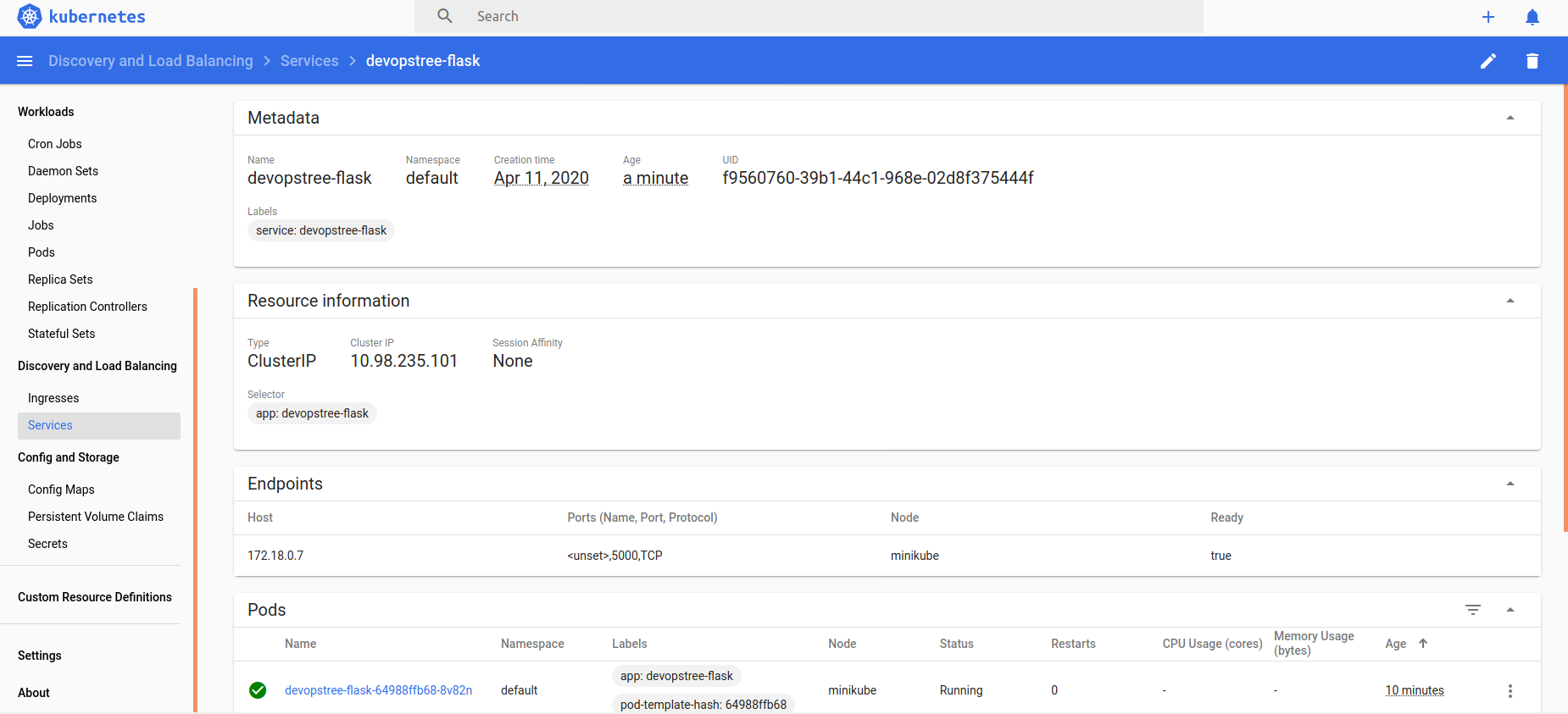
Apply the migrations and bootsrap the database:
$ kubectl get pods
NAME READY STATUS RESTARTS AGE
devopstree-flask-64988ffb68-8v82n 1/1 Running 0 12m
devopstree-postgres-7bbcc445dc-lrzx9 1/1 Running 0 62m
$ kubectl exec devopstree-flask-64988ffb68-8v82n --stdin --tty -- python manage.py recreate_db
$ kubectl exec devopstree-flask-64988ffb68-8v82n --stdin --tty -- python manage.py bootstrap_db
Verify:
$ kubectl exec devopstree-postgres-7bbcc445dc-lrzx9 --stdin --tty -- psql -U devopstree-demo
devopstree-demo=# \c devopstree
You are now connected to database "devopstree" as user "devopstree-demo".
devopstree=# select * from devopstree;
Note: Here, both database & table name is: devopstree
Ingress: minikube-ingress
To enable traffic to access the Flask API inside the cluster, you can use either a NodePort, LoadBalancer, or Ingress:
- A NodePort exposes a Service on an open port on the Node.
- As the name implies, a LoadBalancer creates an external load balancer that points to a Service in the cluster.
- Unlike the previous two methods, an Ingress is not a type of Service; instead, it sits on top of the Services as an entry point into the cluster.
For more, review the official Publishing Services guide.
k8s/devopstree-minikube-ingress.yml:
apiVersion: extensions/v1beta1
kind: Ingress
metadata:
name: minikube-ingress
annotations:
spec:
rules:
- host: devops-tree
http:
paths:
- path: /
backend:
serviceName: devopstree-react
servicePort: 8080
- path: /devopstree
backend:
serviceName: devopstree-flask
servicePort: 5000
Here, we defined the following HTTP rules:
/- routes requests to the React Service (which we are going to setup in the coming steps)/devopstree- routes requests to the Flask Service
Enable the Ingress addon:
$ minikube addons enable ingress
Create the Ingress object: ‘minikube-ingress’
$ kubectl apply -f ./k8s/devopstree-minikube-ingress.yml
Update the /etc/hosts file to route requests from the host we defined, devops-tree, to the Minikube instance.
Add an entry to /etc/hosts:
$ echo "$(minikube ip) devops-tree" | sudo tee -a /etc/hosts
Try it out:
- http://devops-tree/devopstree
It should list the JSON elements.
React
Deployment: devopstree-deployment-react
Review the React project along with the associated Dockerfiles:
- “services/client”
- /services/client/Dockerfile
- /services/client/Dockerfile-k8s
k8s/devopstree-deployment-react.yml:
apiVersion: apps/v1
kind: Deployment
metadata:
creationTimestamp: null
labels:
name: devopstree-react
name: devopstree-react
spec:
progressDeadlineSeconds: 2147483647
replicas: 1
selector:
matchLabels:
app: devopstree-react
template:
metadata:
creationTimestamp: null
labels:
app: devopstree-react
spec:
containers:
- image: vinaydhegde/devopstree-react:latest
imagePullPolicy: Always
name: devopstree-react
resources: {}
terminationMessagePath: /dev/termination-log
terminationMessagePolicy: File
dnsPolicy: ClusterFirst
restartPolicy: Always
schedulerName: default-scheduler
securityContext: {}
terminationGracePeriodSeconds: 30
Again, you can either use my docker image or build your own & push it to Docker Hub:
$ docker build -t <YOUR_DOCKERHUB_NAME>/devopstree-react ./services/client \
-f ./services/client/Dockerfile-k8s
$ docker push <YOUR_DOCKERHUB_NAME>/devopstree-react
Create the Deployment:
$ kubectl create -f ./k8s/devopstree-deployment-react.yml
Check whether a Pod is created along with the Deployment:
$ kubectl get deployments devopstree-react
NAME READY UP-TO-DATE AVAILABLE AGE
devopstree-react 1/1 1 1 5m21s
$ kubectl get pods
NAME READY STATUS RESTARTS AGE
devopstree-flask-64988ffb68-8v82n 1/1 Running 0 48m
devopstree-postgres-7bbcc445dc-lrzx9 1/1 Running 0 98m
devopstree-react-6c8b7c8cc6-t2xsn 1/1 Running 0 5m57s
Verify, Pod and Deployment were created successfully in the dashboard.


Service: devopstree-service-react
k8s/devopstree-service-react.yml:
apiVersion: v1
kind: Service
metadata:
name: devopstree-react
labels:
service: devopstree-react
name: devopstree-react
spec:
selector:
app: devopstree-react
ports:
- port: 8080
targetPort: 8080
Create the service:
$ kubectl create -f ./k8s/devopstree-service-react.yml

Yes.. finally! we are DONE.
You can access the app at: http://devops-tree/
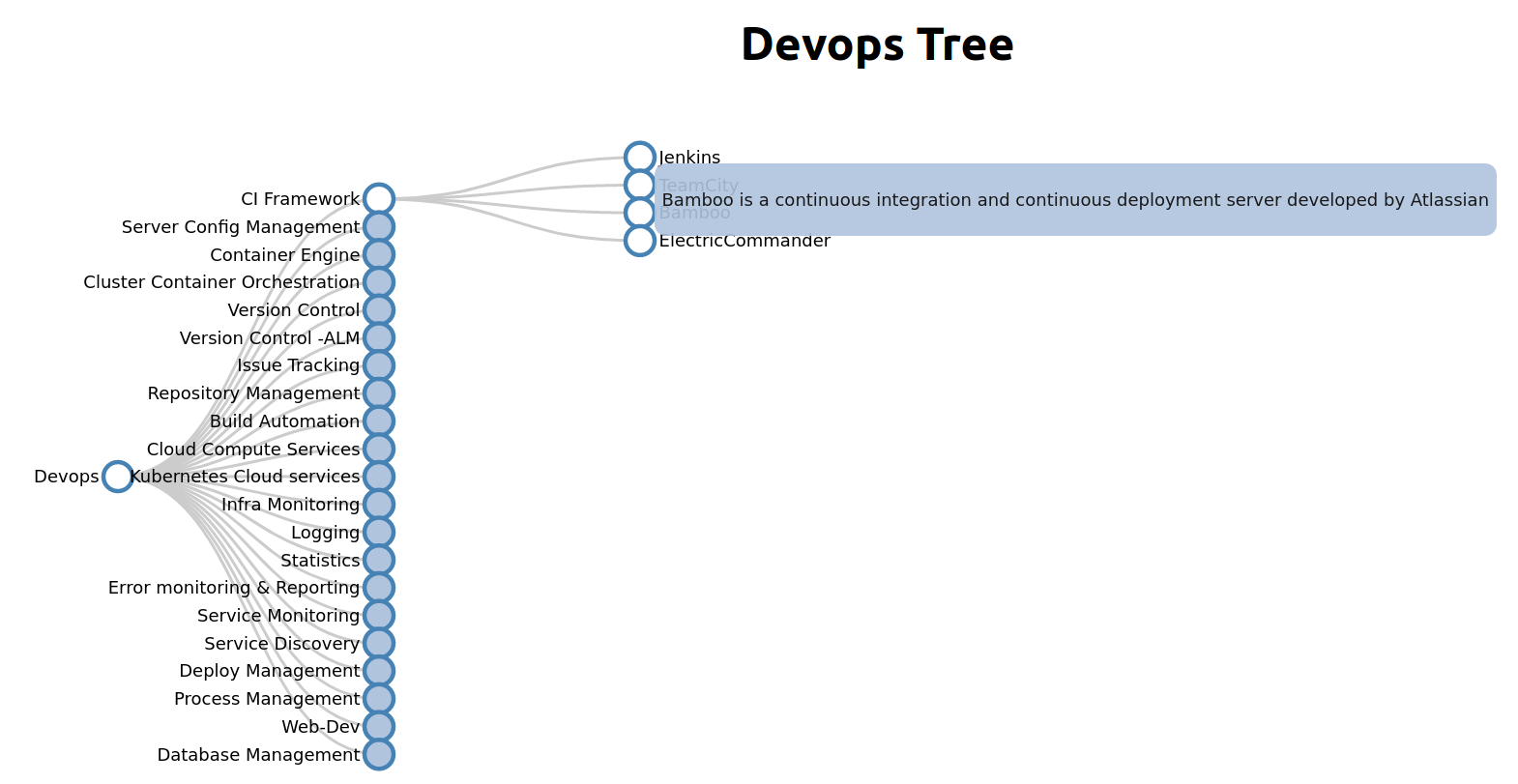
Scaling
Kubernetes makes it easy to scale, adding additional Pods as necessary, when the traffic load becomes too much for a single Pod to handle.
For example, let’s add another Flask Pod to the cluster:
$ kubectl scale deployment devopstree-flask --replicas=2
Confirm:
$ kubectl get deployments devopstree-flask
NAME READY UP-TO-DATE AVAILABLE AGE
devopstree-flask 2/2 2 2 62m
$ kubectl get pods -o wide
NAME READY STATUS RESTARTS AGE IP NODE
devopstree-flask-64988ffb68-8v82n 1/1 Running 0 63m 172.18.0.7 minikube
devopstree-flask-64988ffb68-j5drv 1/1 Running 0 2m25s 172.18.0.10 minikube
devopstree-postgres-7bbcc445dc-lrzx9 1/1 Running 0 112m 172.18.0.6 minikube
devopstree-react-6c8b7c8cc6-t2xsn 1/1 Running 0 20m 172.18.0.9 minikube
Helpful Commands
| Command | Explanation |
|---|---|
minikube get-k8s-versions |
Lists the supported Kubernetes versions |
minikube start |
Starts a local Kubernetes cluster |
minikube ip |
Displays the IP address of the cluster |
minikube dashboard |
Opens the Kubernetes dashboard in your browser |
kubectl version |
Displays the Kubectl version |
kubectl cluster-info |
Displays the cluster info |
kubectl get nodes |
Lists the Nodes |
kubectl get pods |
Lists the Pods |
kubectl get deployments |
Lists the Deployments |
kubectl get services |
Lists the Services |
minikube stop |
Stops a local Kubernetes cluster |
minikube delete |
Removes a local Kubernetes cluster |

Leave a comment